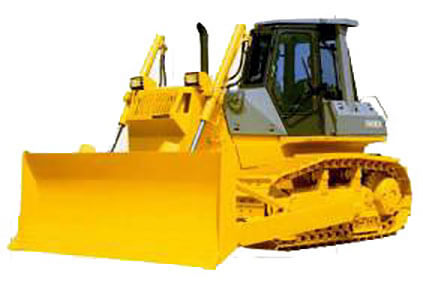1990
While equipment built to accommodate urban environments, by generating less noise, vibrations and emission, became more common, super sized equipment that could withstand harsh working conditions in places like giant mines were also developed.

Twenty two years had passed since the last full model change took place. It adopted a twin mono lever that enabled the left hand to steer and drive forward and backward, and let the right hand operate the work, which eliminated shifting between two hands. By sealing the engine compartment, the noise was reduced significantly.
Weight: 18090kg
Bulldozer
Since its first emergence in 1951, it took only 50 years for the hydraulic shovel to establish its primary position on construction sites worldwide. Its size ranges from mini to super size depending on the scale of construction, and during the half century, it kept evolving by achieving a minimum rear-swing radius and adapting styles that would work with characteristics of each site. Mirroring the movement of a human hand, a hydraulic shovel will continue to evolve during the 21st century.